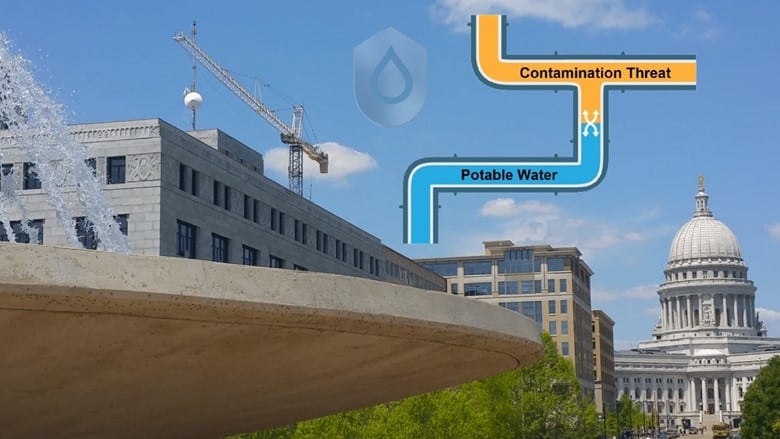Snapshot:
Achieving sanitary survey compliance is critical for public water systems aiming to maintain the health and safety of their water supply. A key component of these inspections is cross-connection control—preventing contaminated water from flowing back into the drinking water system. Inspectors often focus on this area during a sanitary survey, making it essential for water systems to be prepared. Below, we highlight common questions about cross-connection control and offer five strategies to help ensure sanitary survey compliance.

Cross-Connection Control Programs: The Essentials
Common Cross-Connection Control Questions for Sanitary Survey Compliance
- Does the water system have a cross-connection control program? Inspectors will assess whether the public water system has a formalized cross-connection control program. To achieve sanitary survey compliance, this program must be well-documented, clearly outlining policies and procedures to manage backflow risks.
- Are backflow prevention devices regularly tested and maintained? For sanitary survey compliance, it’s crucial that backflow prevention devices are properly installed at high-risk locations and tested regularly. Surveyors will ask for testing records and proof of routine maintenance to ensure the devices are functioning correctly.
- Has a cross-connection survey been completed? A thorough cross-connection survey is an important step toward sanitary survey compliance. Inspectors will want to see evidence that the system has been surveyed for potential contamination hazards and that these surveys are updated regularly.
- What efforts are in place to educate customers on cross-connection risks? Educating customers, especially those with high-risk water uses, is often a part of sanitary survey compliance. Inspectors may look for programs that raise awareness about cross-connection dangers and customer responsibilities for preventing backflow incidents.
- How is cross-connection compliance enforced among customers? To achieve sanitary survey compliance, a water system must enforce its cross-connection control policies. This can involve requiring customers to install backflow prevention devices and to comply with local testing and maintenance ordinances.
Prepare For and Align Your Program With Current Regulations
Regardless of a perceived stance or level of regional “enforcement”, aligning your cross-connection control program with an adequate budget, support, and activities will aid in your next sanitary survey compliance. Responding to a backflow or cross-connection contamination event can be far more costly than improving or implementing a comprehensive approach.

5 Steps to Ensure Sanitary Survey Compliance with Cross-Connection Control
- Update or Implement a Comprehensive Cross-Connection Control Program A written, formal cross-connection control program is the foundation for achieving sanitary survey compliance. The program should outline clear roles and responsibilities, define backflow prevention measures, and establish requirements for routine testing and maintenance of backflow prevention devices.
- Perform Regular Cross-Connection Surveys Regular cross-connection surveys are essential for identifying potential contamination hazards in a water system. Conducting these surveys and keeping them up to date is a critical step toward sanitary survey compliance, ensuring that any risks are identified and mitigated.
- Maintain Backflow Prevention Test Records Routine testing and maintenance of backflow prevention devices are necessary for sanitary survey compliance. Water systems should adhere to informing building owners of mandatory backflow preventer testing by certified professionals and maintain accurate records of all tests and repairs. This demonstrates compliance with regulatory requirements and ensures the ongoing effectiveness of backflow preventers.
- Educate Customers on Cross-Connection Control A robust customer education program is key to achieving sanitary survey compliance. Providing information on the importance of cross-connection control, backflow prevention device testing, and customer responsibilities helps to ensure that everyone involved understands their role in maintaining water safety.
- Keep Detailed Documentation and Compliance Records Proper documentation is crucial for sanitary survey compliance. Water systems should maintain detailed records of cross-connection surveys, backflow prevention device installations, test results, and maintenance activities. These records will be reviewed during sanitary surveys to verify compliance.
Conclusion
Depending on state and regional scrutiny of existing regulations, cross-connection control may be a central focus for achieving sanitary survey compliance. By preparing for common inspection questions and implementing a comprehensive cross-connection control program, public water systems can safeguard their water supply and meet regulatory requirements. Regular testing, customer education, and meticulous record-keeping are essential steps to ensuring compliance and preventing water contamination.


